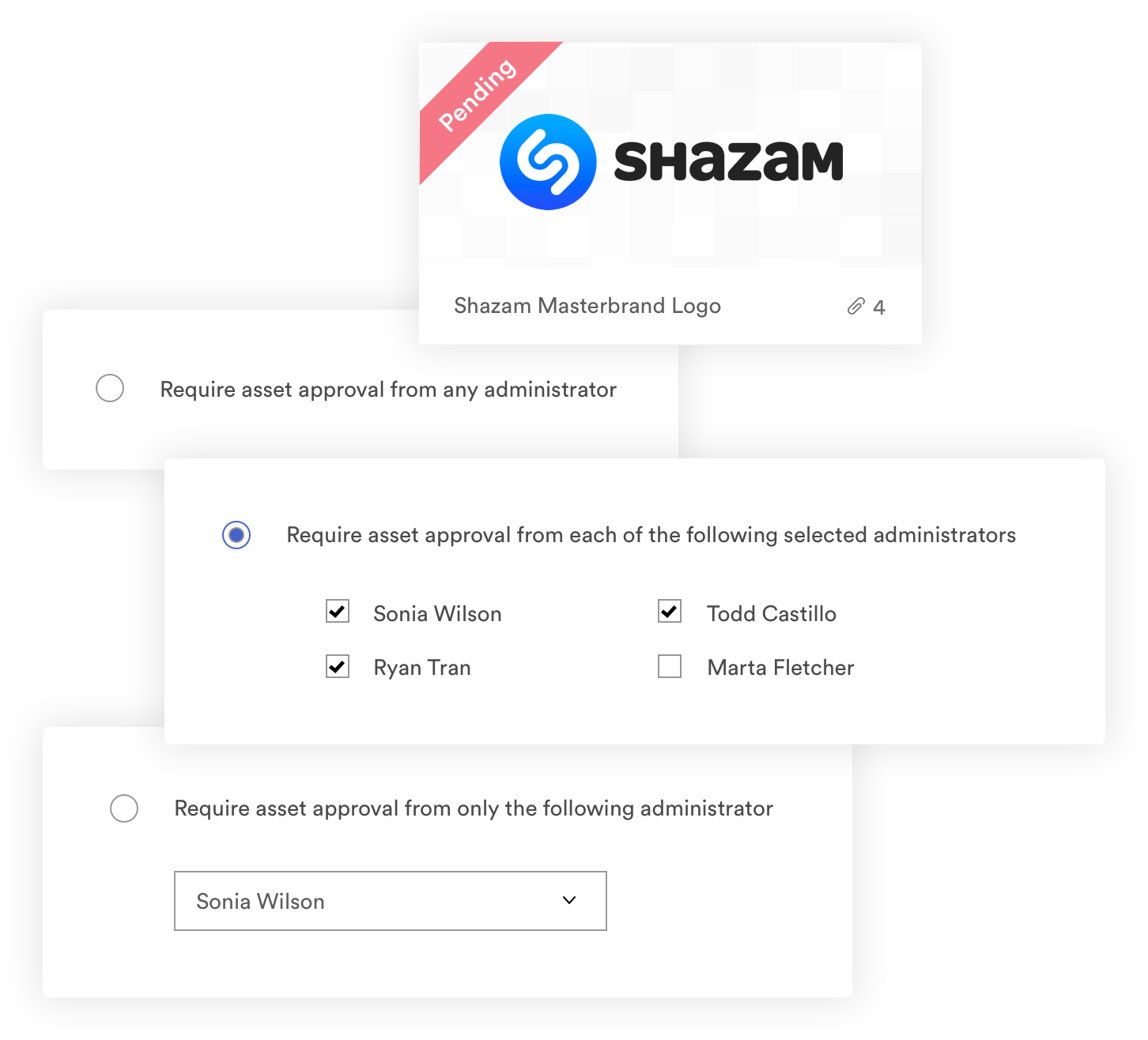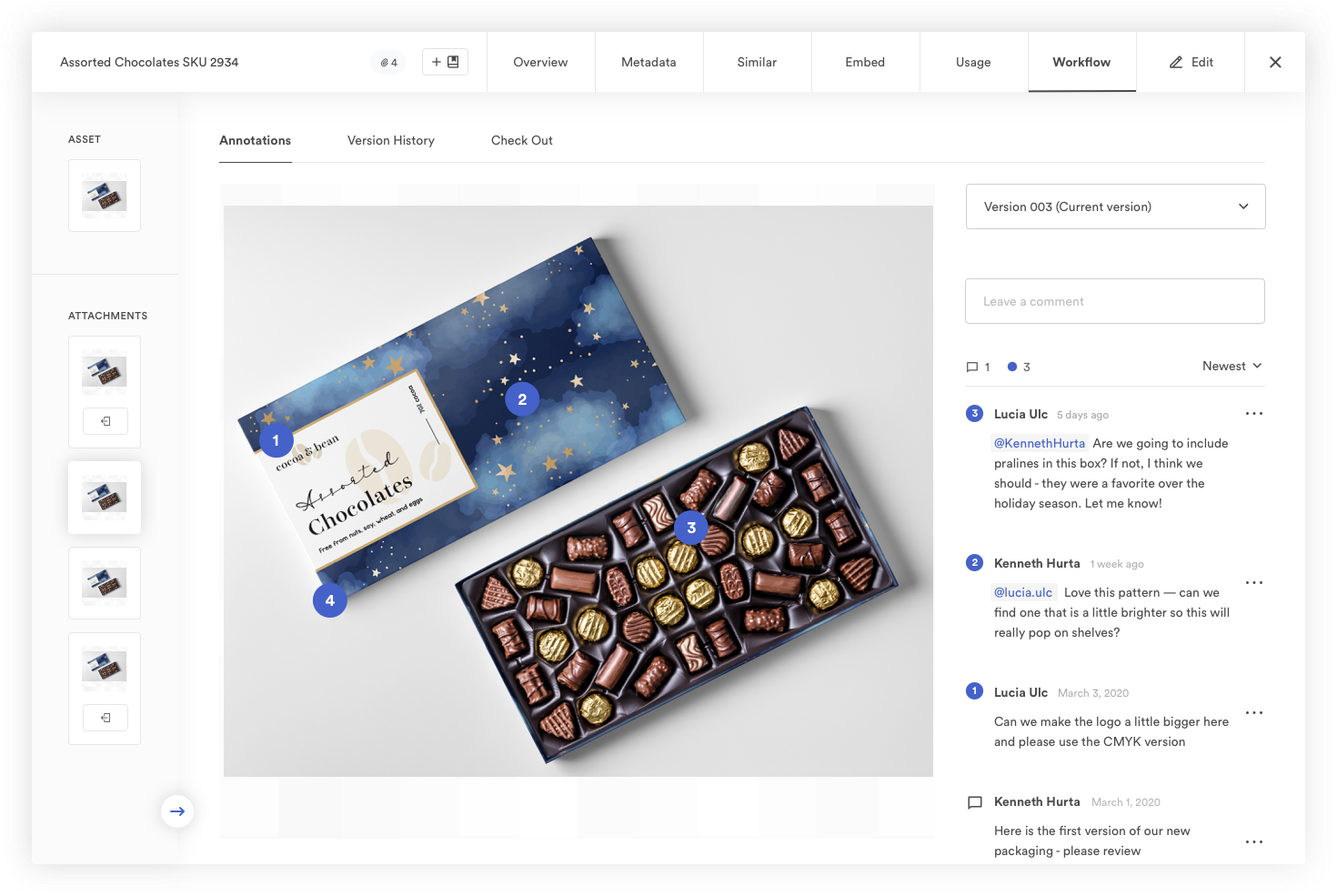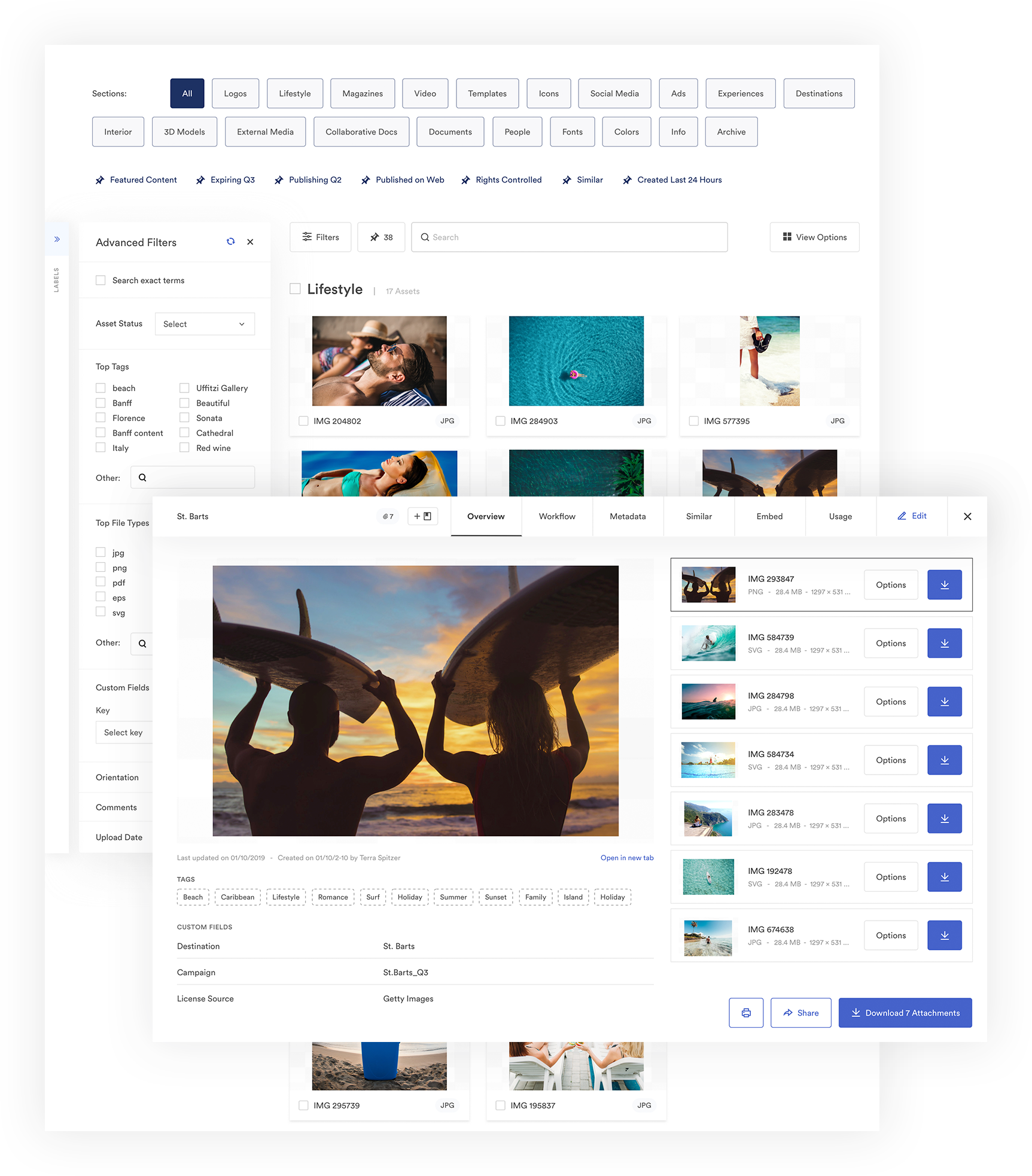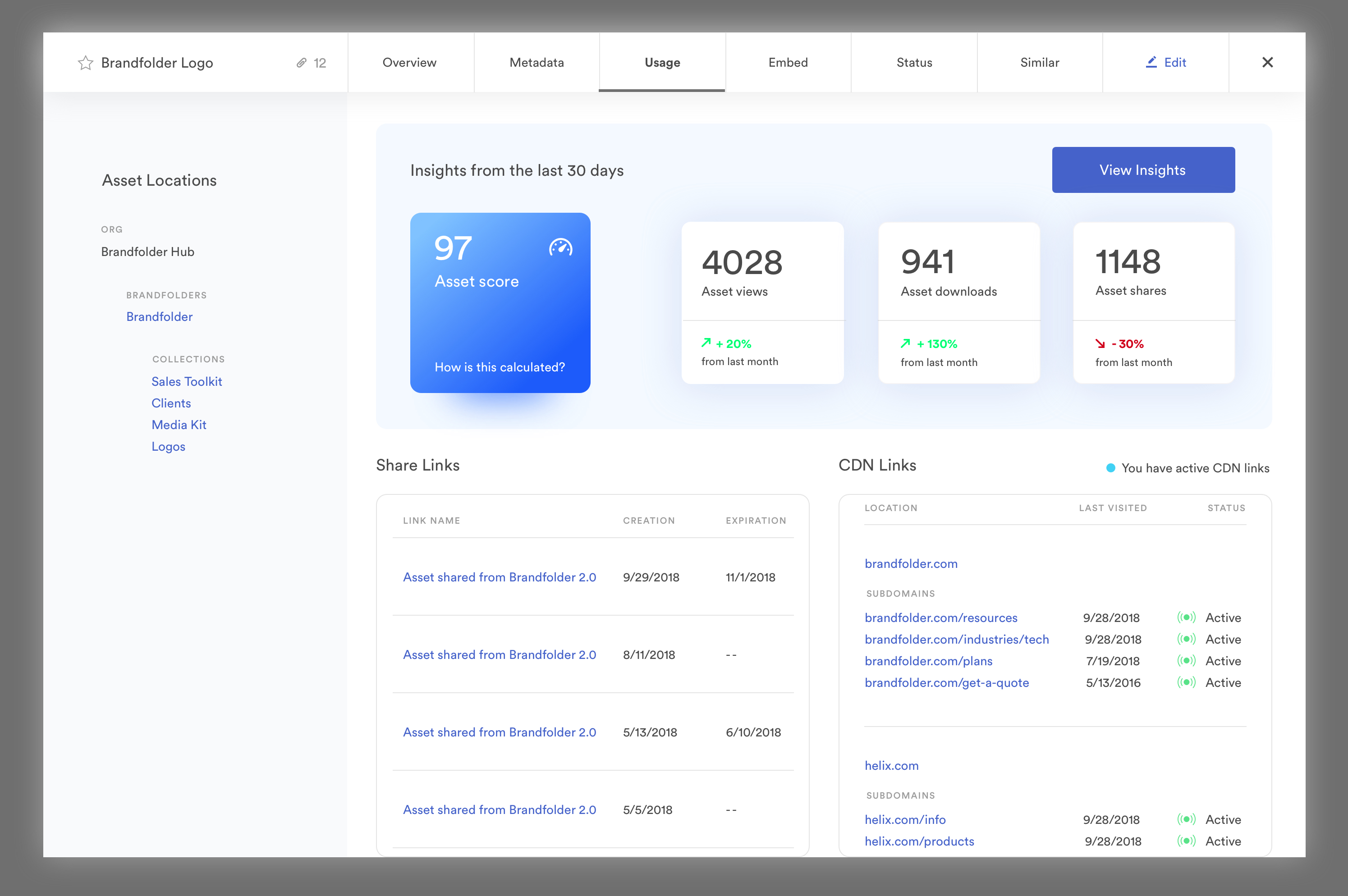What Is Digital Asset Management (DAM)?
Is your company struggling to manage its digital assets effectively? Digital Asset Management software might be the answer your team needs to efficiently locate, store, organize, retrieve, and distribute its entire digital content collection from a single, reliable source.
In this post, we'll delve into DAM software and explore how it assists teams in staying organized and on track.
What is DAM?
Digital asset management (DAM) is a software platform designed to centrally store and manage digital content. It is user-friendly and quick to implement, offering internal and external stakeholders controlled access to all their digital assets, such as photos, images, creative files, videos, audio, presentation decks, documents, and much more. Crucially, DAM systems enhance campaign productivity and maintain brand consistency.
The best DAM systems organize your digital assets to maximize their value for your brand. They offer features like workflow automation, asset licensing expiration dates, and customizable user access levels for files, folders, projects, and entire campaigns. With built-in analytics, DAM software can also provide insights into the performance of creative assets.
When files are scattered across various devices and platforms, they often become underutilized. A cloud-based DAM consolidates all of a brand’s assets, enabling users to securely collaborate on content from any location.
As workflows occur within the platform, feedback is directly linked to ongoing projects, ensuring communication is clear and not lost in translation or buried in emails.
What Functions Does Digital Asset Management Software Serve?
DAM software boosts a brand's operational efficiency in seven key areas related to digital assets: creation, organization, collaboration, distribution, storage, and performance measurement.
Let's explore how DAM enhances each of these aspects.
Creation
Teams utilizing DAM can expand projects by integrating with creative tools such as Adobe Creative Suite, built-in video editors, and project management applications like Smartsheet, allowing them to develop new assets seamlessly without switching between platforms.
Organization
Brands are generating more digital assets than ever before. DAM software serves as a centralized hub for organizing and managing this digital content.
It enables the use of tags, filters, and advanced search features—like in-document search and image recognition—to swiftly locate files within asset libraries of any size.
Platforms like Brandfolder also offer the ability to add metadata tags to any file type, monitor version history, set access levels and permissions, establish collection expiration dates, and utilize AI to identify duplicate asset uploads.

By implementing custom approval settings, you can minimize redundancies and guarantee that assets are always distributed correctly.
CASE STUDY: Discover how P.F. Chang's global marketing team efficiently manages their digital assets in bulk using Brandfolder, saving valuable hours each month.
Collaboration
Once assets are uploaded, users have the ability to comment, add annotations, and make edits, thereby simplifying the entire review and approval process.

Collaboration encompasses all types of assets and media content, including PDF documents, design files, and videos. Organizations can access and modify files from any location, enabling teams to work together with the appropriate individuals regardless of their geographical location.
Distribution
A DAM system allows assets to be published from a single cloud-based location. You can distribute assets directly from your DAM using public or private links, with the option to set expiration dates for added security.
Embed assets directly into your website, ensuring that visitors and media outlets have access to the latest logos, bios, and brand imagery. Whenever an asset is edited or a new one is added, it is automatically updated at the distribution point.
Storage
A DAM provides agencies and brands with comprehensive digital asset storage for limitless files of any size, all within a secure, cloud-based environment. This is especially important for storing larger assets like high-resolution images, videos, and audio files.
Features such as file backups, customizable user permissions, and rights management bolster the security of these stored assets. Although storage capacity is unlimited, users can assign expiration dates to assets to minimize unnecessary digital clutter.

Performance & Measurement

Traditional on-premise and cloud-based storage systems offer limited insights into asset usage.
In contrast, a digital asset management solution delivers comprehensive analytics and insights regarding asset views, placements, and interactions. This allows you to track activity trends over time and utilize that data to more precisely evaluate the return on investment of your brand assets.
Easy Integration
A DAM system can be connected with various tools and cloud-based platforms, including project management software, content management systems, and image editing software.
Who Uses Digital Asset Management?
There are two types of DAM users: Internal and external. Below are a few example use cases:
Internal Users
Creatives
In-house creatives, including graphic designers and photographers, can utilize a DAM system to access branded assets and upload new creative files for review and distribution. These users will value the built-in integrations with tools they frequently use, such as Adobe Creative Suite and project management software.
Sales & Marketing
DAM software enables sales and marketing teams to work together on branded materials for sales pitches and presentations, thereby streamlining entire campaigns.
IT & Legal
IT professionals can leverage DAM to reduce the strain on resources required for managing permissions and maintaining systems. It also simplifies metadata management and the development of custom configurations through API connections and seamless integrations.
Legal teams benefit from DAM systems as well, as they can assign expiration dates to assets to reduce compliance risks and prevent misuse.
External Users
Agencies
DAM systems enable agencies to effortlessly share assets with external clients, communicate client feedback, and move projects from pending to approved status.
Contractors & Partners
Businesses can effortlessly share assets with external contractors and partners for collaborative campaigns aimed at selling services or developing products together.
12 Benefits of a Digital Asset Management System
Digital asset management software helps both internal and external teams stay organized by providing a unified source of truth. It facilitates quick access to necessary files, supports automated workflows, and allows for the management of permissions for individual items or entire collections of assets.
The benefits of DAM for brands are extensive, but several key themes are common across organizations:
- Quickly locate digital assets with minimal training
- Personalize asset organization
- Centralize all asset-related collaboration
- Avoid duplication of digital content
- Ensure all digital assets are utilized
- Share and access files with anyone, anytime, anywhere, on any device
- Create and collaborate on digital assets in a single location
- Seamlessly distribute company content across digital channels like CMS and social media
- Maintain consistent brand identity
- Set expiration dates for licensed assets
- Discover opportunities to repurpose digital assets
- Evaluate asset performance, usage locations, and user engagement
Is it time for you to implement a digital asset management solution?
If you're seeking an improved method to handle digital assets, oversee publishing rights, and ensure brand consistency, it's time to explore a DAM solution. Ready to gain control over your assets?
Learn more about Brandfolder today.
Share this
You May Also Like
These Related Stories
Use of Marketing Collateral Templates in Digital Asset Management



No Comments Yet
Let us know what you think